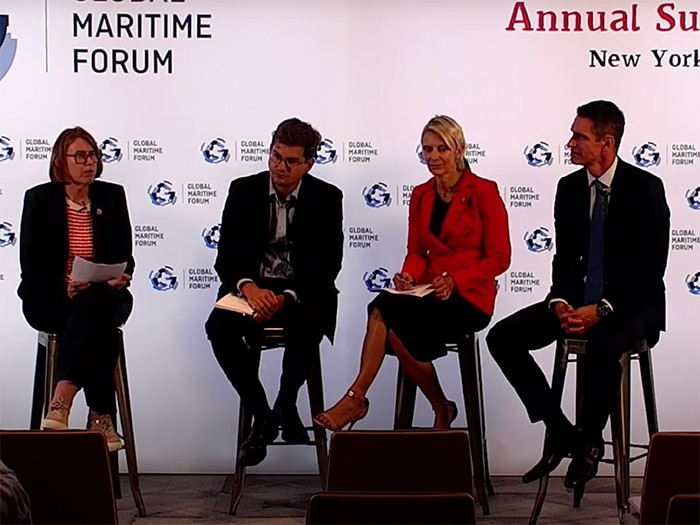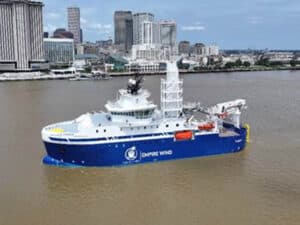
Report sees progress on shipping’s path to zero emissions
Written by Nick Blenkey
Report highlights were revealed at New York press briefing
How far along is shipping on the path to becoming a zero emissions industry? A new study indicates that there are some encouraging first signs
In September last year, the Getting to Zero Coalition released a “Call to Action for Shipping Decarbonization” that said that shipping must align with the Paris Agreement temperature goal and be run entirely on net-zero energy sources by 2050.
“By 2030, we must reach at least five percent zero emission fuels in international shipping and have
commercially viable zero emission vessels operating along deep-sea trade routes, supported by the
necessary infrastructure for scalable zero emission fuels (SZEF) and energy sources, including production, distribution, storage, and bunkering,” said the coalition, whose members include some of maritime’s biggest players.
Yesterday, the industry got some feedback on progress thus far.
A first-of-its-kind “Climate Action in Shipping Report – Progress towards Shipping’s 2030 Breakthrough,’’ was released during New York Climate Week, prior to the Global Maritime Forum Annual Summit, and in parallel with the Clean Energy Ministerial Global Clean Energy Forum.
The report finds there has been “significant progress from industry, national governments and positive developments at the IMO,” but converting those commitments into concrete developments is vital for further progress.
The study, led by Katharine Palmer, Shipping Lead for the UN High level Climate Champions team, and Domagoj Baresic, Consultant at UMAS, evaluated the 2030 breakthrough goals against key levers for change, which include: technology and supply, finance, policy, demand, and civil society action.
FROM PILOTS TO PRODUCTION: $40 BILLION ANNUAL INVESTMENT
In terms of progress on technology and supply of SZEF (Scalable Zero Emission Fuels), the report found that shipping is only “partially on track.’’ While there are more than 200 shipping decarbonization pilot and demonstration projects in the pipeline and progress has been seen on bunkering and safety guidelines internationally, moving from pilots to SZEF production commitments, investments, and infrastructure development is now a key requirement.
Based on UMAS analysis, it is expected that the industry will have to commit to investing around $40 billion annually by 2030 for SZEF bunkering and production, and the report points to the need for greater clarity on funding commitments for SZEF production infrastructure.
It adds that current orders for SZEF-ready ships should increase further, whilst a genuine zero carbon freight market is expected to emerge.
On policy, the authors said that it is vital that positive policy signals, such as consensus on pricing GHG emissions, translate into firm agreements at the IMO in 2023, with the coming year offering an important window of opportunity before the revision of the IMO’s Greenhouse Gas Strategy.
Katharine Palmer, Shipping Lead at the UN High level Climate Champions team said: “To achieve the 2030 Breakthrough goal we need near-term project level action describing tangible, collective action required. This report acts as an honest stocktake of progress which needs to continue to be monitored and tracked. In the run-up to COP27, this is an important milestone to signal a true shift to delivery to convert these commitments and pledges to actions and solutions”
Domagoj Baresic, Consultant at UMAS said: “In order for the shipping industry to decarbonize, multiple actions which can increase production and adoption of scalable zero emission fuels in the industry are required now. This report provides evidence for the significant progress which has been made to decarbonize shipping, yet at the same time shows that further significant action is required. The evidence presented shows now is the time to take the necessary actions to ensure that by 2030 the industry is committed to a decarbonization trajectory.”




